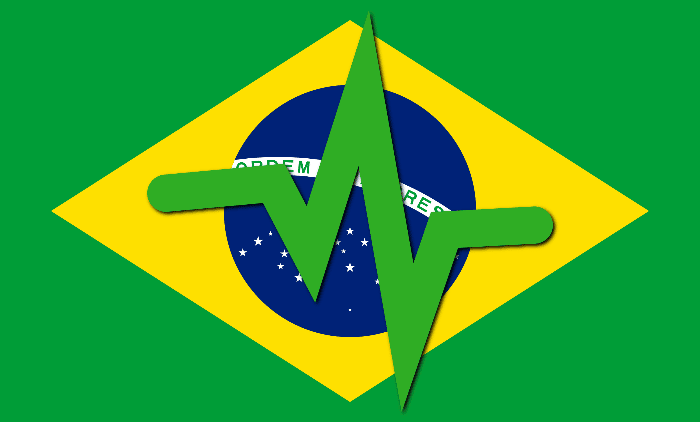recipes to spice up drinks
[ad_1]
The ice is no longer just for keeping the drink cold: now they are part of the decoration. At clothing brand parties, ice cubes stamped with the company’s logo are practically mandatory. On the tables of luxurious weddings, wild flowers frozen in ice cubes gain space. Tiktok theme content creators attract 30 million views (and sizable paychecks) overnight by displaying their stash of ices tucked away in drawers, along with links to buy molds for the product in all corners of the world. formats and sizes. There’s also the pinnacle of domestic opulence: a countertop ice machine that turns ice cubes into tiny nuggets, previously only available at fast-food outlets.
“I have almost 75 ice cube trays,” says Kami Mehta, a tiktoker from Florida, who at the end of last year began sharing the dozens of ice cubes in her freezer.
Since then, several other influencers have followed suit, gaining a huge audience: ice is no longer just frozen water for your drink, but a blank canvas for your art.
– It’s amazing to see how many people are doing this – says tiktoker about the videos. “You have to be creative now.
In 2020, 51% of 2,000 Americans surveyed by home appliance company Bosch identified themselves as “obsessed with ice”. Still others said they couldn’t drink a glass of water without it being cold, and if no ice cubes were available, they would simply drink less water.
Ice “Fever” is going viral on TikTok. Last year, #Icetok, a hashtag with approximately 950 million views, became a phenomenon on the social network. Videos posted on the hashtag include tutorials on making “powder ice” and people pouring any liquid into ice machines.
But most popular among this TikTok genre is the subgenre about restocking ice drawers, an offshoot of the oddly reassuring #cleantok (cleaning and decluttering videos) craze that swept the internet during the pandemic. Refill videos, which show people pouring spices into jars and refilling clear containers with dispense products, appeal to a large audience that craves organization or the comfort of repetition. This content is highly specific: restocking guest restrooms, restocking coffee, and restocking snack drawers.
“I think during the pandemic, some people made dough for bread and kimchi, while others made ice cubes,” jokes Camper English, a cocktail writer and ice obsessive who is best known for introducing a technique for making crystal clear ice to connoisseurs. of cocktails for about a decade. “I know there’s been a steady increase, but something has turned the key in the last six months. I feel like it’s all over the place, particularly with these videos.
Here’s a video of restocking ice: an empty freezer drawer is opened and a pair of hands, in this case belonging to Mehta, appear with plastic containers. Then 13 types of ice cascade down. First, spheres, small rectangles, large cubes and heart shapes. Then colored ice: ring box-sized cubes frozen with orange and lemon slices; pink ice bricks with fruit mixed in for smoothies; Creamy hazelnut ice made from frozen coffee in the shapes of roses, pumpkins and bulldogs. The video, posted in September, has more than 17 million views.
The success is believed to be related to the ASMR sensation that the crunch of ice in the freezer drawer causes.
“It’s a fascinating thing that’s part of our everyday lives,” explains Leslie Kirchhoff, founder of Disco Cubes, a custom ice company in Los Angeles.
After learning the English way of cleaning ice, the businesswoman developed her own way to freeze objects, mainly flowers, products and logos.
– AND [um procedimento] pretty intense,” he says. “It takes three very well-timed steps over three days.
Kirchhoff closely monitors the process and charges a high price:
— The cheapest we do for the flower spheres is US$8 each (approximately R$40). A logo on ice or a more expensive flower costs at least $14.
Americans have been trading ice for centuries.
“America has the oldest ice industry in the world,” says Jonathan Rees, a professor of history at Colorado State University-Pueblo, who has published three books on the development of American refrigeration.
The national ice industry was started in 1806 by Frederic Tudor. – He deliberately cultivated an ice market. He’d donate it to bars, let people get hooked on it, and then sell it.
In 1860, Rees explains, Americans developed a taste for the product throughout the year. Before freezers arrived, ice was cut from ponds and lakes in colder regions and shipped to warmer places as far away as Hawaii. In 1875, the ice man was an omnipresent figure, going door to door to fill the ice boxes: – in every house, from the richest to the poorest – says the professor. Home electric refrigeration was perfected in 1925, and the advent of ice cube trays soon followed.
Today, the same technology is still in use, but ice production is evolving.
Many ice lovers, instead of buying dozens of molds or learning time-consuming techniques, are simply investing in more sophisticated devices. In 2019, South Korean electronics giant LG launched a fridge equipped with a freezer that spews out what the company calls Craft Ice, including cubed ice, crushed ice and ice spheres – allowing consumers to indulge. , according to the advertisements, “like a ballerina”.
Kristen Seninger, a marketing program manager in San Francisco, bought a General Electric Opal ice chip machine nearly five years ago and has gained a following on social media as the self-proclaimed “ice chip queen.”
“Once I saw how viral my ice machine was and how often I talked about it,” he recalls, “they presented me with the 2.0. This model retails for nearly $700 and is a #icetok darling.
“A lot of followers bought the machine because of my influence,” says Seninger, who receives a share of revenue from sales made through his Amazon and LTK storefronts. So far, it has sold 200 sets.
Rees, the historian, thinks there is something distinctly American about this ice fever.
– We are willing to spend on something that is essentially free. This is a sign that we value you.
special ices
In homes, in bars and on social media, ice is no longer just a square cut. Today, there are dozens of molds and machines that can create a different style of ice for every occasion. Here are some tips on the most popular shapes and the best ways to use them.
toothpicks
These thin sticks are great for putting into water bottles with narrow openings. Hence its nickname: water bottle ice. Molds come uncovered and covered (to prevent spills) and vary in size. Freeze cucumbers or lemon peels in them for a hydration boost.
cubes
These are not like the cubes created in the common freezer pan. They are much larger, about the size of ring boxes, and can be made in silicone molds. You can use these cubes — which take longer to melt — in all kinds of drinks, to put pieces of fruit, herbs or citrus peel, or even to freeze coffee and smoothies.
balls
These little marbles — which sit somewhere between crushed ice and ice chips — can be made in molds, without an expensive refrigerator. Use them to quickly cool drinks or make cocktails like cobblers and juleps.
spheres
First popularized in upscale bars, the large ice spheres are great for keeping a drink cold, especially the alcoholic variety, without diluting it too quickly. With the rise of silicone molds, these larger ices now come in interesting shapes like roses and bulldogs.
Ice forms
As with ice spheres, there are now hundreds of unique ice molds for sale online that go beyond the simple cube: butterflies, cacti, skulls, stars, hexagons and more. Use these templates for your next themed party, holiday party, or just because it makes you happy.
[ad_2]
Source link


